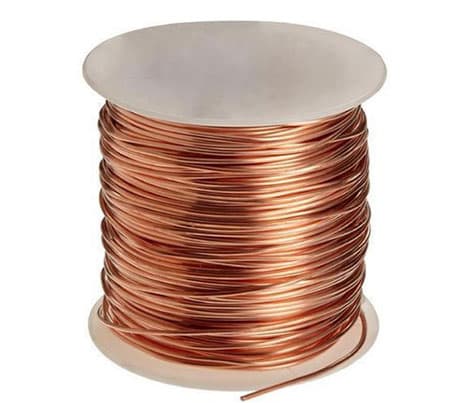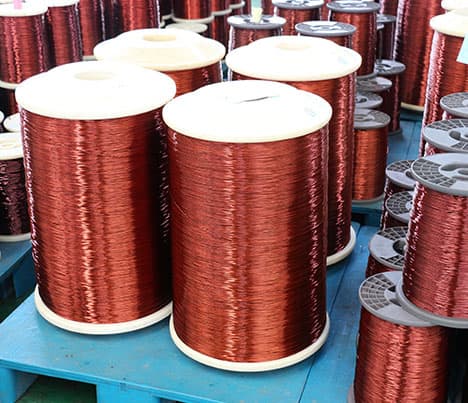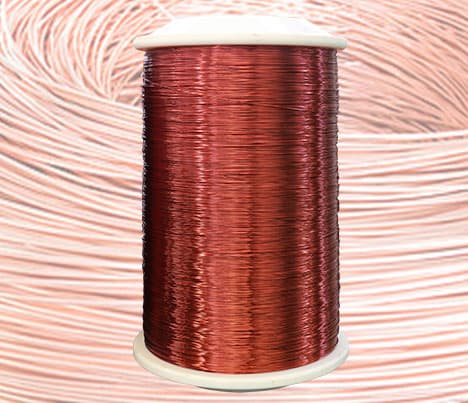What's the copper conductor?
Pure copper is a soft metal, the surface is red-orange with metallic luster when it is just cut, and the element is purple-red. It has good ductility, high thermal conductivity and electrical conductivity, so it is the most commonly used material in cables and electrical and electronic components. It can also be used as a building material and can be composed of many kinds of alloys. Copper alloys have excellent mechanical properties and low resistivity, the most important of which are bronze and brass. In addition, copper is also a durable metal that can be recycled many times without compromising its mechanical properties.
Copper is a purple-red lustrous metal with a density of 8.92 g/cm3. Melting point 1083.4 ℃, boiling point 2567 ℃. Has good ductility. Good thermal and electrical conductivity.
Copper is essential to all living organisms as a trace dietary mineral because it is a key constituent of the respiratory enzyme complex cytochrome c oxidase. In molluscs and crustaceans, copper is a constituent of the blood pigment hemocyanin, replaced by the iron-complexed hemoglobin in fish and other vertebrates. In humans, copper is found mainly in the liver, muscle, and bone. The adult body contains between 1.4 and 2.1 mg of copper per kilogram of body weight.

Pure Copper Conductor - Enameled Wire
The most suitable materials for magnet wire applications are unalloyed pure metals, particularly copper. When factors such as chemical, physical, and mechanical property requirements are considered, copper is considered the first choice conductor for magnet wire.
Most often, magnet wire is composed of fully annealed, electrolytically refined copper to allow closer winding when making electromagnetic coils. High-purity oxygen-free copper grades are used for high-temperature applications in reducing atmospheres or in motors or generators cooled by hydrogen gas. At present, most enameled wire manufacturers use low-oxygen copper rods or oxygen-free copper rods to produce enameled wires.
The enamelled copper wire offers many advantages for electrical appliances. This thin layer of insulation makes it useful for building transformers, motors, inductors, hard disk actuators, speakers, electromagnets etc. The enamelled copper wire is electrolytically-refined copper. The aluminum wire which is enamelled is mainly used for motors and transformers since its insulation layer has been made from tougher polymer materials and not enamel. Since these wires come with a coating they are also popularly called magnet wires.

Copper Conductor Application
1. Copper fittings for soldered plumbing joints: The major applications of copper are electrical wire (60%), roofing and plumbing (20%), and industrial machinery (15%).
2. Wire and cable: This includes structural power wiring, power distribution cable, appliance wire, communications cable, automotive wire and cable, and magnet wire. Roughly half of all copper mined is used for electrical wire and cable conductors.
3. Electronics and related devices: Copper electrical busbars distributing power to a large building, heat sinks and heat exchangers, Electromagnets, etc.
4. Electric motors: Copper’s superior conductivity enhances the efficiency of electrical motors.
5. Renewable energy production: Renewable energy sources such as solar, wind, tidal, hydro, biomass, and geothermal have become significant sectors of the energy market.
6. Copper is also used for Architecture, Antibiofouling, Antimicrobial, Speculative investing, Folk medicine

Why Choose the Enameled Copper Wire Instead Of Copper Conductor?
In the electric equipment, the manufacturers is generally choose the enameled copper wire or copper cables instead of pure copper, why?
1.Because of its high electrical conductivity, copper is commonly used in coil windings, bearings, collectors, brushes, and connectors of motors, including the highest quality motors.
2.The main reason for using this coating or “enamel” is to prevent the wire from getting caught in accidental short circuits. This also explains why you should use this type of wiring for building transformers, inductors and electromagnets.
3.The enamelled copper wire is also useful because it can be soldered easily.
4.The insulation prevents short circuits between turns as would happen if windings were built with plain copper wire. The insulation is usually quite thin and does not occupy much volume. Different kinds of coating materials are used as is required to ensure insulation integrity at different temperatures.

